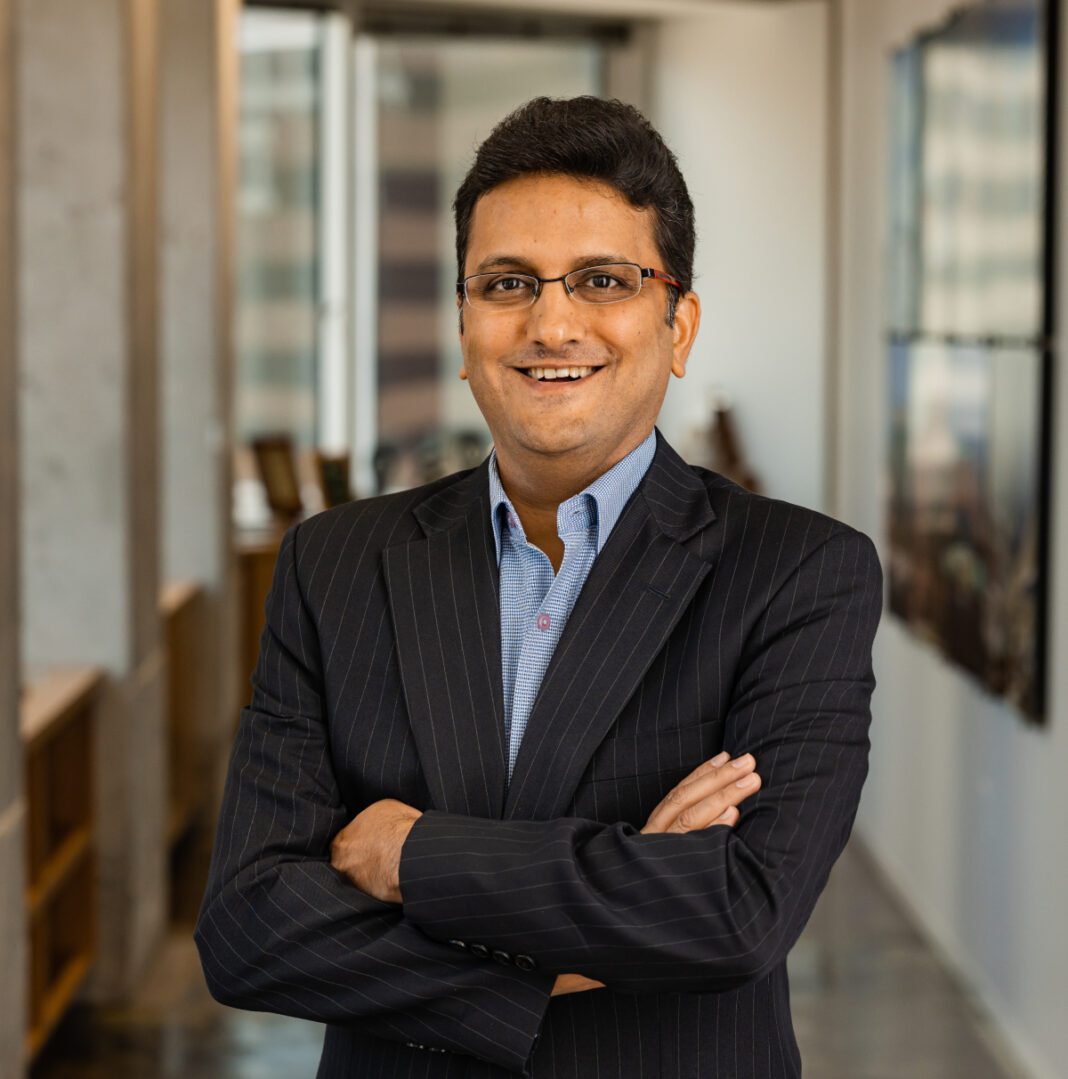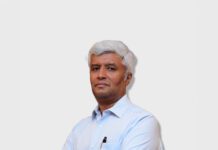How has your journey been so far as the managing director of Walter P Moore India?
It’s hard to believe that out of my 25 years with Walter P Moore, I have been leading our team in India for more than 12 years. Honestly, it’s a dream come true. Our growth has been remarkable — from starting with just one employee to now having around 180 employees in India. We have built an extremely talented team of engineers and other professionals who are helping to make our entire company more resilient and financially strong. The recent inauguration of our Bengaluru office marks a new chapter in our expansion narrative, with our sights set on new horizons across India. It has been a privilege to lead this exceptional team and I see many opportunities for Walter P Moore to change the landscape of India’s future.
What are the primary areas of expertise and services offered by Walter P Moore India in the field of engineering and consulting?
At Walter P Moore, we have three focus areas: Structural Engineering, Infrastructure Engineering, and Diagnostics Engineering.
In Structural Engineering, we provide design and peer review services for a variety of projects. This includes mid- to high-rise buildings in the residential, commercial, hospitality, and healthcare sectors to long-span structures such as stadiums, arenas, convention centres, and airport terminals.
The mission of Infrastructure Engineering is to create resilience and sustainability in the built environment. We navigate the complexities of civil engineering, water resource management, and traffic planning with a focus on sustainable solutions that stand the test of time. From meticulous site grading to advanced traffic impact analyses, our team is dedicated to enhancing the harmony between infrastructure and the environment.
Diagnostics Engineering is where our acumen meets legacy, diagnosing and healing the ailments of existing structures. We delve into the intricacies of structural health, offering bespoke renovation and retrofitting solutions that rejuvenate steel, concrete, and mixed-material constructions. This holistic approach ensures the longevity and safety of the built environment, reflecting our commitment to excellence and innovation in engineering.
Could you highlight some significant steel-specific projects that the firm has undertaken in India?
Walter P Moore takes immense pride in our landmark steel project, the Motera Cricket Stadium, also renowned as the Narendra Modi Cricket Stadium in Ahmedabad. Our innovative design of the stadium’s steel roof, adorned with a tensile fabric (PTFE) covering, stands as a hallmark of our engineering excellence.
Our portfolio also includes designing an arena for a religious institute in Chennai, a structure that’s shaping up to be a testament to our expertise in long-span steel structures. We have been selected as the design engineer for the upcoming arena in Bhubaneshwar, further showcasing our proficiency on such ambitious and complex projects.
At Byculla Zoo in Mumbai, we crafted stainless steel structures for a leopard enclosure and a bird aviary, integrating stainless steel columns, cables, and netting to form durable and secure habitats. In Jamnagar, for Reliance, we’re applying our skills to similar projects, ensuring each design is tailored to meet the unique needs of its inhabitants. These projects display our versatility and innovative approach to steel structure design.
What leadership principles and strategies do you believe have been instrumental in the firm’s success in India?
At the heart of Walter P Moore’s ethos is a culture deeply rooted in nurturing employee well-being and fostering a spirit of teamwork and collaboration. We are dedicated to cultivating an environment where our team’s happiness is the cornerstone of client satisfaction. Our leadership embodies the principles of servant leadership, with a flat organisational structure that champions inclusive decision-making and encourages the exchange of ideas. This philosophy is the bedrock of our culture, where each individual’s voice is not only heard but valued. This creates an atmosphere where every member plays an integral and valued role in our collective success.
In addition to myself, we now have five principals in our India operations who are partners in the firm. We’re committed to maintaining a horizontal organisational structure where individuals are owners in the firm with an inherent desire to help the company succeed.
How does the company establish and sustain robust client partnerships in the Indian market?
Client relationships are fundamental to our business. We prioritise and nurture these relationships by valuing each client individually. Rather than pursuing quantity or a large volume of projects, our focus is on delivering exceptional service and understanding the unique needs of each client. This approach allows us to build long-lasting partnerships, often collaborating on multiple projects and consistently maintaining these valued relationships over time. We’ve worked with many clients for decades on a variety of projects.
In the grand tapestry of our work, while individual projects may be transient, the relationships we weave with our clients are perpetual. Our unwavering dedication to fulfilling our clients’ expectations and approaching each interaction with the utmost respect and consideration is the essence of our business creed.
Are there any specific sustainable initiatives or innovative technologies that you find particularly valuable in your work?
Sustainability is a firmwide growth strategy at Walter P Moore. In structural projects, we have traditionally focused on minimising material use and promoting sustainable practices. Recently, we have expanded our approach to include whole-building life cycle analysis. This involves evaluating not only cost and material savings during construction but also considering the energy use and embodied carbon emissions associated with materials from their initial production. This shift represents a critical evolution in our sustainability efforts. Walter P Moore is a Pilot Sponsor of The Embodied Carbon in Construction Calculator (EC3) and is involved in the development of Product Category Rules (PCRs).
For infrastructure, we are actively involved in water resources engineering, focusing on sustainable practices such as water reuse, recycling, and rainwater harvesting. These initiatives are integral to our sustainability efforts. We’re currently spearheading multiple projects, including a landmark airport development in India. Through our leadership in design and master planning, this airport is projected to be water-positive for the next 45 years. Our scope involves not only designing the overall master plan but also integrating and connecting individual ponds and lakes to enhance water management and sustainability.
Moreover, we’re aiding cities in crafting climate-resilient blueprints and devising a pan-India pond design framework. This framework is set to empower field staff with the tools to assess and enhance ponds, bolstering water collection and groundwater rejuvenation across both rural and urban landscapes. This holistic approach underscores our dedication to fostering a sustainable future through innovative engineering solutions.
In your experience, what are some current trends and challenges in the engineering and consulting industry in India?
In construction engineering, timelines are increasingly compressed, bringing together various disciplines earlier in the project lifecycle. Traditionally, architectural design, engineering design, and contractor involvement followed distinct phases. However, with schedules shrinking, collaboration among these stakeholders has become more interdependent. Rather than viewing this as a challenge, we see it as an opportunity for different trades to work closely together. This trend of early integration and collaboration is shaping the future of the industry.
The construction industry is undergoing a profound digital transformation, an area where historically it has lagged behind other industries. Embracing this shift is integral to our approach, as we heavily emphasise digital tools and processes. We utilise advanced parametric modelling tools like Rhino, Grasshopper, and Dynamo, not only leveraging their capabilities but also focusing on managing them effectively and ensuring interoperability across different models and software platforms. This commitment to digital innovation is pivotal in enhancing efficiency and collaboration within our projects.
We have developed proprietary in-house tools aimed at breaking down silos within our workflow. These tools facilitate seamless integration among interdependent models such as engineering, architectural, and fabrication models. For instance, changes made in the engineering model automatically reflect in the Revit model, our preferred Building Information Modelling (BIM) platform. This synchronisation ensures that all relevant models stay updated and aligned throughout the project lifecycle, enhancing efficiency and collaboration across disciplines.
Looking ahead, both as an industry and specifically as a company, our trajectory is towards deeper digitisation and maximising the benefits of digital tools. This involves integrating technologies like AI and machine learning into our everyday practices.
How does the company adapt to industry changes and stay updated with the latest developments?
We continually adapt to changes and advancements in technology, not only in India but across our international operations as a US-based company. Our commitment lies in staying at the forefront of technological innovation. We invest significantly in technology and collaborative tools across our global footprint because we recognise that this is the direction in which our industry is evolving.
Embracing digitisation has transformed our lifestyles, from smartphones to the integration of AI and machine learning tools like ChatGPT. In the architectural field, we’re seeing advancements where automated tools can generate designs based on specified criteria, potentially reducing the need for traditional architectural services. As engineers, staying ahead in this evolving landscape involves leveraging these tools to our advantage rather than viewing them as threats.
What are Walter P Moore India’s future aspirations and goals for operations in India? How do you envision the firm’s growth and impact in the Indian market?
Over the past 12 years, Walter P Moore has grown significantly in Inda as we recognised the variety of opportunities for development. Beginning in Pune and expanding to Bengaluru, we have established a strong presence and are actively exploring opportunities for further growth in both the Indian market and internationally.
We are currently focusing on specific project types that we believe offer significant value in the growing Indian market, targeting large-scale projects in sectors such as stadiums, aviation, and healthcare. We see tremendous growth and abundant opportunities in India. The sports industry, in particular, is experiencing rapid growth, and we are directing our attention towards capitalising on these emerging opportunities.
In our role as conscientious stewards of the environment, we’re acutely aware of the pressing need to tackle sustainability challenges with water management and judicious use of our natural resources at the forefront.
We are leading the way in harnessing the transformative potential of AI in the AEC industry. It’s a topic I am deeply passionate about as we navigate the intersection of technology and design.





